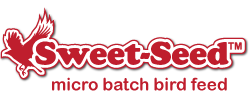That's Not a Baby Hummingbird!

Baby birds are tiny, fuzzy and may seem uncertain with their fluttering wings and hesitant behavior, but that small, fuzzy thing fluttering around your flowerbed isn't a baby hummingbird – it's an adult hummingbird moth.
About Hummingbird Moths
Hummingbird moths are relatively large-bodied moths in either the Sphingidae or Hemaris genus of insects. There are more than 1,400 species of hummingbird moths around the world, and more than 125 in North America. Depending on the type of moth and where it is found, it might also be called a hawk moth, sphinx moth, clearwing moth or bee-hawk moth. They begin life as stout caterpillars called hornworms, and while the caterpillars eat plants, the adult moths sip nectar. These insects are most active at dusk and dawn, though there are a few species that will be active throughout the day and even some that can be active at night.
Hummingbird Moth or Baby Hummingbird?
Hummingbird moths have confused many bird lovers who are anxious to see a baby hummingbird, but if you know what to look for, it's easy to tell the moths and birds apart – no matter how similar they may seem. Just check for…
- Size - A hummingbird moth is huge for an insect, with a body length of 1-2 inches and a wingspan from 1.5-4 inches, depending on the species. Even though hummingbirds are the smallest birds in the world, however, they are still bigger than these moths, with body lengths of 3-4 inches and wingspans of 4-5 inches. While baby hummingbirds might be small enough to be compared to moths, baby birds do not fly, so if you see a tiny flying thing, it's most likely a moth.
- Antennae - Hummingbird moths have long, prominent antennae that sprout from their heads in a forward-pointing direction, which they use to sense their surroundings. Hummingbirds, on the other hand, have no distinct antennae. Some hummingbirds do have crests or plumes, but those typically point toward the back, and no hummingbird – adult or baby – that regularly visits North America would have any plumes that could be mistaken for antennae.
- Wings - Moths have broad, relatively blunt or rounded wings that may show segments, clear patches, spots or other markings, while hummingbirds have more streamlined, thinner, tapered wings. A moth's wings might be brightly colored, but most hummingbirds have dark gray-black wings without any distinct patches or unusual colors. When perched or in the nest as babies, hummingbirds always fold their wings, while moths may rest with their wings open.
- Legs - Hummingbird moths have long, dangling legs that can be seen even in flight, while hummingbirds have much shorter, smaller legs that are tucked tight against the body when the birds are in flight. Even when perched, it is unusual to see much of a hummingbird's legs. Moths also have six legs while hummingbirds of any age, of course, only have two.
- Colors - Both hummingbird moths and hummingbirds can be colorful, but hummingbird moths typically have bands or large blocks of color across their backs and abdomen. Hummingbirds, on the other hand, are more colorful on the head and often show metallic iridescence in bright light. Baby hummingbirds lack this color and are much plainer because their feathers are not fully formed.
- Bill - The needle-like bill of a hummingbird is a distinct characteristic, and while some hummers have curved bills, those in North America typically have straight bills with very little curving that can be easily seen. Hummingbird moths, on the other hand, have a thin tongue (called a proboscis) that may look like a bill, but has a very distinct, abrupt break or crook in it. Moths can also retract their tongues, but a hummingbird's bill is always visible. Moth tongues can change shape and move, but a hummingbird's bill is not flexible.
Whether you have hummingbird moths or hummingbirds visiting your yard, both are exceptional pollinators that will enjoy your nectar-rich flowers and help keep your flowerbeds looking bright.
